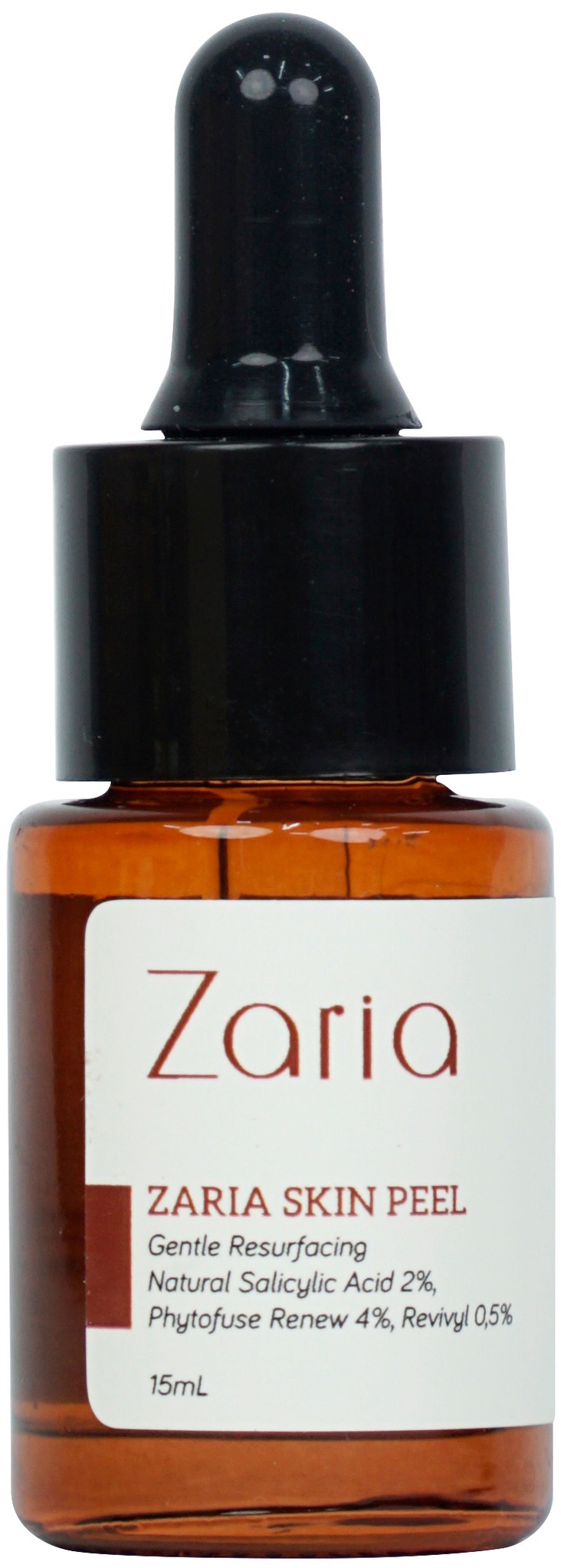
Skin Peel
Highlights
Other Ingredients
Skim through
| Ingredient name | what-it-does | irr., com. | ID-Rating |
|---|---|---|---|
| Propylene Glycol | moisturizer/humectant, solvent | 0, 0 | |
| Betaine Salicylate | exfoliant, antimicrobial/antibacterial | ||
| Selaginella Lepidophylla Extract | emollient | ||
| Gaultheria Procumbens Leaf Extract (98% Salicylic Acid) | perfuming | ||
| Orobanche Rapum Extract | |||
| Quaternium-73 | |||
| Lactobacillus Ferment | soothing, preservative | goodie | |
| Propanediol | solvent, moisturizer/humectant |
Zaria Skin PeelIngredients explained
- It's a helper ingredient that improves the freeze-thaw stability of products
- It's also a solvent, humectant and to some extent a penetration enhancer
- It has a bad reputation among natural cosmetics advocates but cosmetic scientists and toxicology experts do not agree (read more in the geeky details section)
The combination of famous exfoliant, salicylic acid and gentle moisturizer, betaine. It counts as a mild exfoliant and natural moisturizer, skin smoothing agent.
You usually find this guy in K-Beauty products, as due to regulations, pure salicylic acid can be used only in tiny amounts in South-Korean formulations. A generally accepted ballpark number is that betaine salicylate is twice as gentle as salicylic acid, i.e. a 4% betaine salicylate product is similar to a 2% salicylic acid one.




Lactobacillus ferment is an interesting probiotic ingredient with some promising properties.
First, according to a 2009 Estee Lauder patent, it’s a DNA repair enzyme and it can help to protect the skin against environmental aggressors.
Second, still according to Estee Lauder research but now from 2012 the ingredient has anti-microbial and anti-inflammatory properties and holds promise in the treatment of acne and rosacea. For the former one 5% was needed to show effectiveness, but for reducing skin sensitivity already 1% showed results.
The anti-acne effect is confirmed also by US manufacturer, Barnet, that says that Lactobacillus ferment is helpful in killing harmful bacteria and creating a healthy balanced microflora. Compared to well-known anti-acne and anti-inflammatory salicylic acid the probiotic worked faster at reducing the size and redness of acne lesions.
It also goes by the trade name Leucidal Liquid SF and can serve in the formula as a natural preservative.
Bottom line: It’s not the most proven ingredient (yet) but definitely a very promising one especially if you have sensitive skin, acne or rosacea.
Propanediol is a natural alternative for the often used and often bad-mouthed propylene glycol. It's produced sustainably from corn sugar and it's Ecocert approved.
It's quite a multi-tasker: can be used to improve skin moisturization, as a solvent, to boost preservative efficacy or to influence the sensory properties of the end formula.
You may also want to take a look at...
| what‑it‑does | moisturizer/humectant | solvent |
| irritancy, com. | 0, 0 |
| what‑it‑does | exfoliant | antimicrobial/antibacterial |
| what‑it‑does | emollient |
| what‑it‑does | perfuming |
| what‑it‑does | soothing | preservative |
| what‑it‑does | solvent | moisturizer/humectant |





